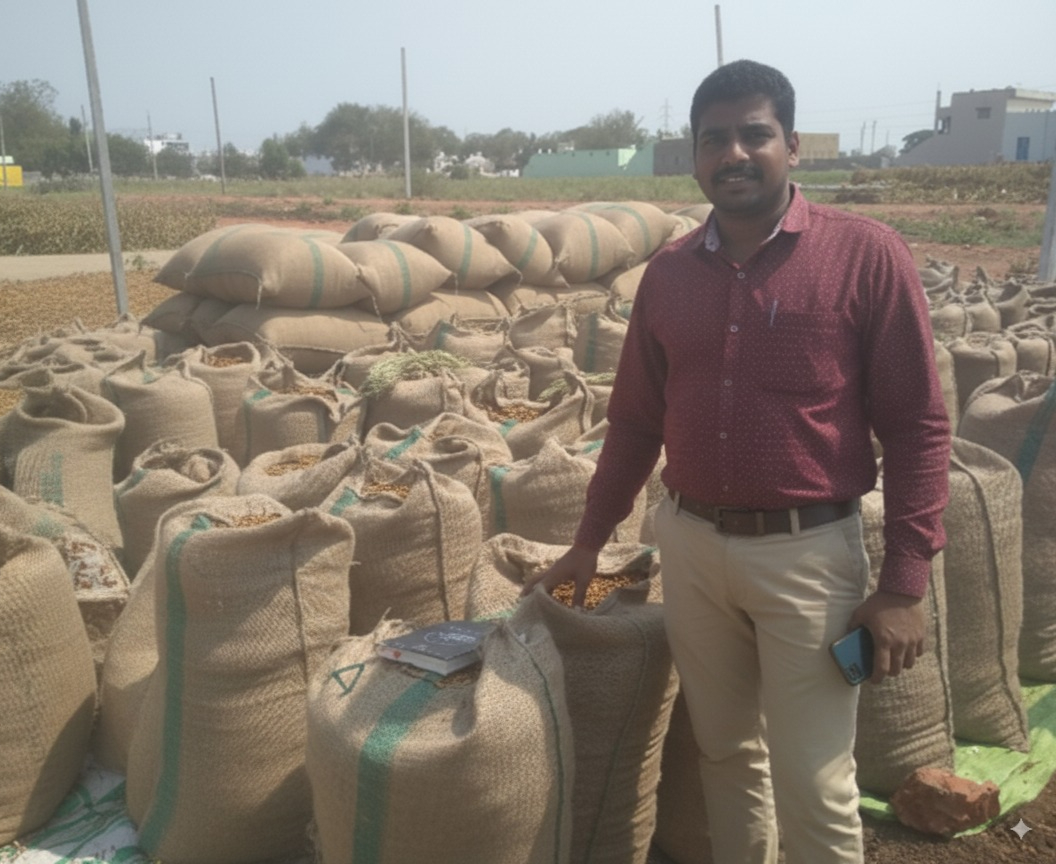
Reading time : 6 mins
The Tobacco Turnaround
From slow approvals and paperwork overload to a scalable, field-ready app—this project captures the transformation of an entire procurement cycle.
Client : ITC IIVL
My Role : Product Designer
Domain : ERP, Supply chain Digitization, Field Operations Automation,
The Business aimed to
digitize procurement and eliminate inefficiencies by creating a mobile-first, field-ready solution that was faster, scalable, and field-ready, capable of reducing errors, accelerating approvals, and creating transparency across the procurement cycle.
At its core, this wasn’t just about building an app. It was about helping field agents like Rajesh work faster, giving buyers like Kartik clarity and control, and enabling ITC to scale procurement from 850MT to 2500MT—without chaos.
Challenges
-
Manual data entry and paperwork led to frequent errors.
-
Approvals were slow and created bottlenecks.
-
Field operations and SAP worked in silos, with delayed syncing.
-
Connectivity gaps in rural areas prevented real-time updates.
-
The existing setup couldn’t scale to handle 3X procurement growth.

%201.png)

Results and outcome
Procurement accelerated
End-to-end cycle shortened from 4 days to 1 day, improving turnaround.
Cut 100% manual paperwork
Eliminated all physical paperwork through end-to-end digitization.
Scalability achieved
Enabled ITC IIVL to scale procurement from 850MT → 2500 MT in one year (3x capacity).
Data accuracy improved
Through QR scanning and digital validation (expected reduction in manual errors).
Offline-first advantage
Offline-first workflows ensured uninterrupted operations in low-connectivity rural areas.
Improved workflow clarity
With clear screens, structured steps, guided flows and clearer handovers between roles.
"Earlier I write all in paper, carry so many sheets....Now its just scan in mobile and done.
Work is much fast, less efforts."

Ramesh Reddy
Field Agent
"Aditya understood our goals, spoke with stakeholders, & turned everything into nice & easy flows. His designs made digitization possible."

Naveen
Product Manager

Empathize, Research and Ideation
I began by mapping the current procurement process and gathering requirements, which uncovered critical challenges like connectivity gaps, paperwork overload, and scaling pressures. These insights became the foundation for shaping the solution.
To turn insights into action, I used Personas, User stories, and User flows to keep design people-focused, while brainstorming methods like SCAMPER and Worst Possible Idea unlocked creative, field-ready solutions. Wireframes then brought these ideas to life in a simple, offline-first design.

"Recognition Rather than Recall"
Wireframes

Low-Fi Screens
Designs
After multiple rounds of iteration and feedback, the wireframes evolved into the final designs—screens that were simple, field-ready, and built to perform in real-world conditions. Every element was refined through testing, from readability under bright sunlight to clearer button labels that removed confusion in the flows.
You can find the detailed user testing insights here, showing how feedback shaped these designs into their final form.

Prototype
From insights to interfaces—breaking down each key flow to show how core workflows took shape as simple, field-ready designs.




My Learnings
This project reminded me that design goes far beyond screens—it’s about understanding people, contexts, and constraints. A few reflections that stood out for me:
Designing for extreme contexts like poor connectivity, bright sunlight, and high-volume operations.
Structured creativity matters. Methods like SCAMPER and Worst Possible Idea helped me challenge assumptions and translate constraints into smart, field-ready solutions.
I learned that client requirements show the what, but only by seeing real users and workflows can you understand the why and design effective solutions.
K.I.S.S. (Keep It Simple, Stupid): Keeping interfaces simple and jargon-free proved essential for making technology inclusive and usable for all.
Keep Iterating

